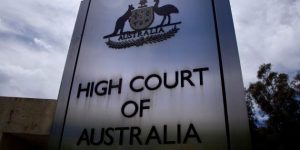Back in April, we reported on Masson v Parsons & Ors, a sperm donor case before the Australian High Court.
The Facts
Susan and Margaret Parsons, a lesbian couple, conceived a child by artificial insemination. Susan, the birth-mother, used sperm from a known donor, Robert Masson. Masson’s name appeared on the child’s Birth Certificate, and Margaret Parsons was listed as an “other parent”.
At the time of conception, Masson believed he would be fathering the child, and would be providing physical care and financial support for the child. Masson subsequently provided some care to the child and her sister.
Susan and Margaret, seeking to relocate to New Zealand with their children, initiated proceedings in the Family Court of Australia. Masson objected to the proposed relocation. The Family Court decision was appealed up to the High Court.

The High Court’s Decision
For the High Court, Masson’s legal parental status turned on the application of relevant Commonwealth and state laws.
The Family Law Act 1975 (Cth) does not define the term “parent” exhaustively.
However, section 14(2) of the Status of Children Act 1996 (NSW) provides that:
“If a woman (whether married or unmarried) becomes pregnant by means of a fertilisation procedure using any sperm obtained from a man who is not her husband, that man is presumed not to be the father of any child born as a result of the pregnancy.”
Masson’s lawyers argued that, as there is no gap in the Commonwealth law, state laws should not apply.
The High Court majority agreed. As the child’s biological father and as one involved in her life, Masson was a parent.
This decision does not open the gates to custody battles with anonymous sperm donors. However, sperm donors who develop a relationship with their biological children could be considered legal “parents” – whether or not they intended to. This may deter sperm donors from connecting with their children, and recipients from allowing donors any child contact.
